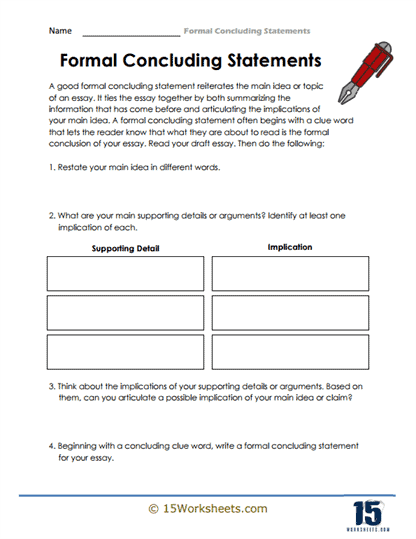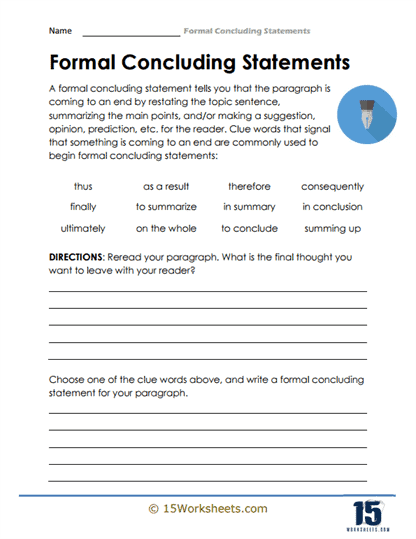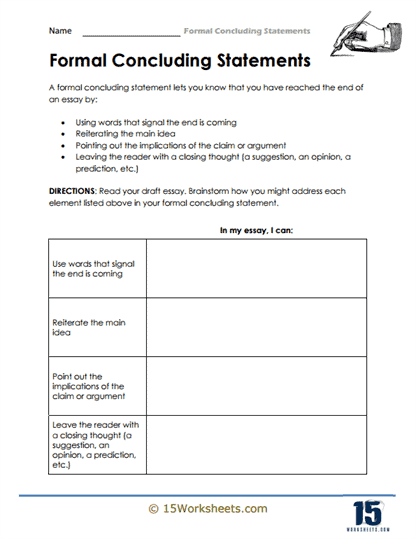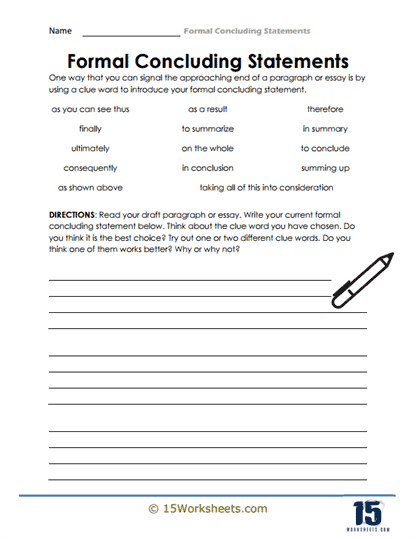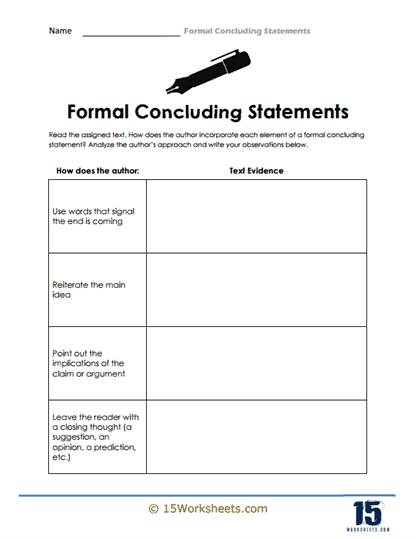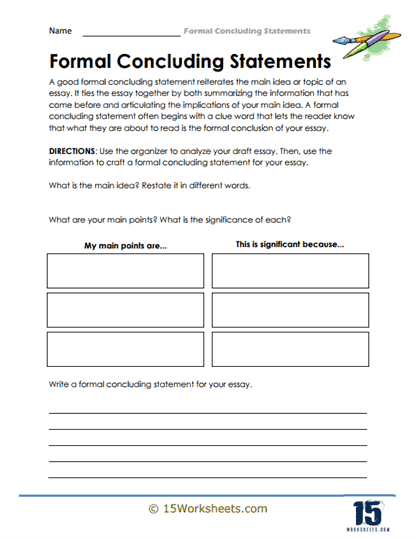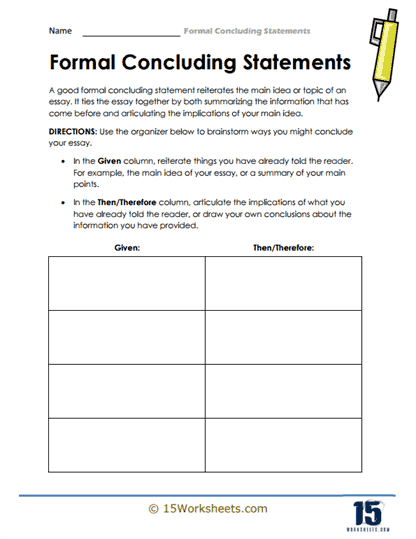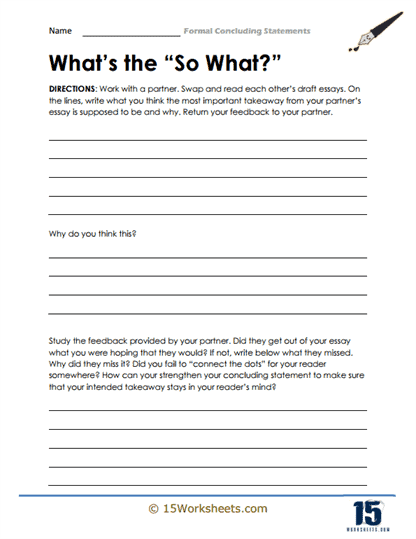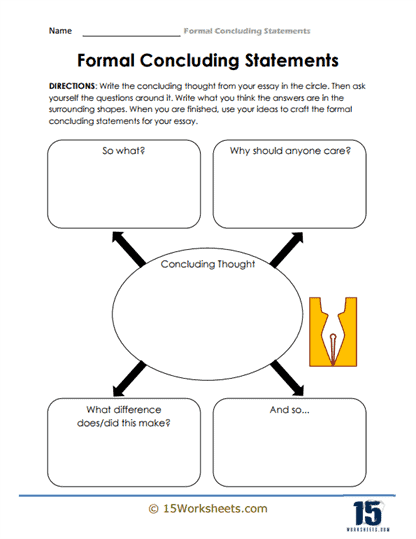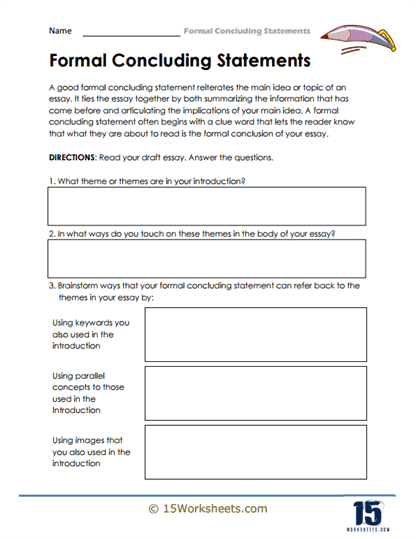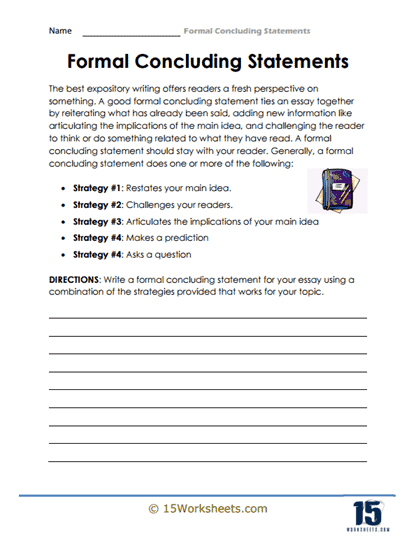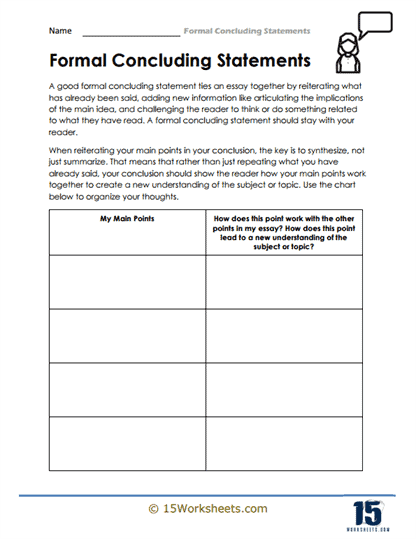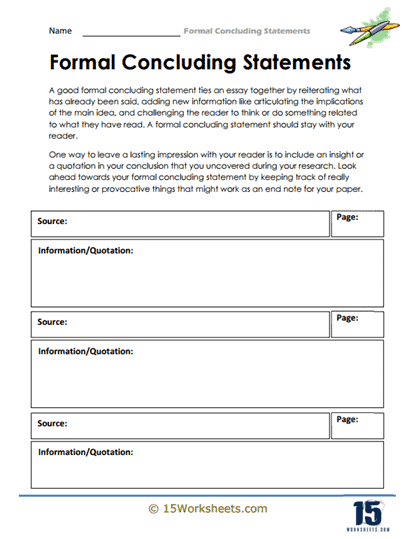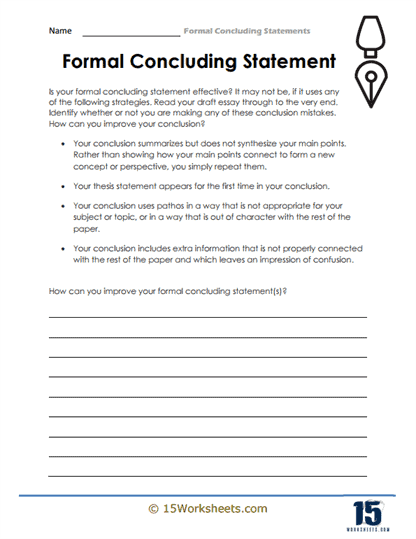Concluding Statements Worksheets
All About These 15 Worksheets
Equip your students with the art of crafting impactful closing statements with this series of 15 worksheets, designed to help them develop the skills necessary for creating strong and effective conclusions in their writing. Each worksheet provides students with guided exercises and practical strategies to enhance their understanding and application of concluding statements.
This series caters to students across different grade levels, offering a range of worksheets that cover various aspects of concluding statements. Through these worksheets, students will:
- Develop an awareness of how effective conclusions can leave a lasting impact on their readers;
- Learn strategies for selecting and condensing the most important ideas or arguments into a concise and coherent summary;
- Restate their thesis or main idea in a compelling and memorable way;
- Experiment with different language choices and identify the most impactful options for their closing statements;
- And learn to refine their closing statements, ensuring they align with the overall tone and message of their writing and leave a strong and lasting impression.
This series of worksheets serves as a valuable resource for teachers seeking to enhance their students’ writing skills and help them create impactful conclusions. By engaging with these worksheets, students develop the abilities to craft strong and effective closing statements, summarize key points, and leave a lasting impression on their readers.
How to Write Concluding Statements
Writing effective and impactful concluding statements for essays is crucial for leaving a lasting impression on your readers. Here are some tips that teachers can share with their students to help them craft compelling conclusions.
- Summarize the main points: Recap the key arguments or ideas presented in your essay. However, avoid merely restating what you have already said. Instead, provide a concise summary that reminds readers of the main takeaways from your essay.
- Revisit the thesis statement: Connect your concluding statement to your thesis statement or main idea. Emphasize the significance of your argument and highlight how your essay has addressed the initial question or prompt. This creates a sense of closure and reinforces the central theme of your essay.
- Leave a final thought or lasting impression: End your essay with a thought-provoking statement, an insightful observation, or a compelling question that encourages further reflection. This final touch can linger in the minds of your readers and prompt them to consider the broader implications of your essay’s topic.
- Connect to the broader context: Situate your essay within a larger context or real-world application. Discuss the implications of your findings, highlight the relevance to society or current events, or suggest avenues for future research or action. This demonstrates the broader significance of your work and showcases its relevance beyond the essay itself.
- Maintain a consistent tone: Ensure that your concluding statement aligns with the overall tone of your essay. If your essay has been serious and analytical, maintain that tone in your conclusion. If your essay has been more personal or narrative-driven, reflect that in your closing statement. Consistency in tone creates a cohesive and unified essay.
- Use memorable language: Employ vivid language, powerful imagery, or rhetorical devices to make your concluding statement more memorable. This helps create a lasting impact on your readers and makes your conclusion stand out. Be careful not to overuse flowery language or clichés—strive for genuine and evocative expressions.
- Consider your audience: Tailor your concluding statement to your specific audience. Consider their expectations, values, and interests. Adapt your language and tone accordingly, ensuring that your conclusion resonates with your readers and leaves a strong impression on them.
- Revise and edit: Like the rest of your essay, your concluding statement should be well-crafted and polished. Take the time to revise and edit it for clarity, coherence, and conciseness. Remove any repetitive or unnecessary information, and ensure that your concluding statement flows smoothly from the rest of your essay.
Remember, your concluding statement is your final opportunity to make an impact on your readers. By summarizing your main points, connecting to the broader context, and leaving a thought-provoking impression, you can craft an effective and impactful conclusion for your essay.

